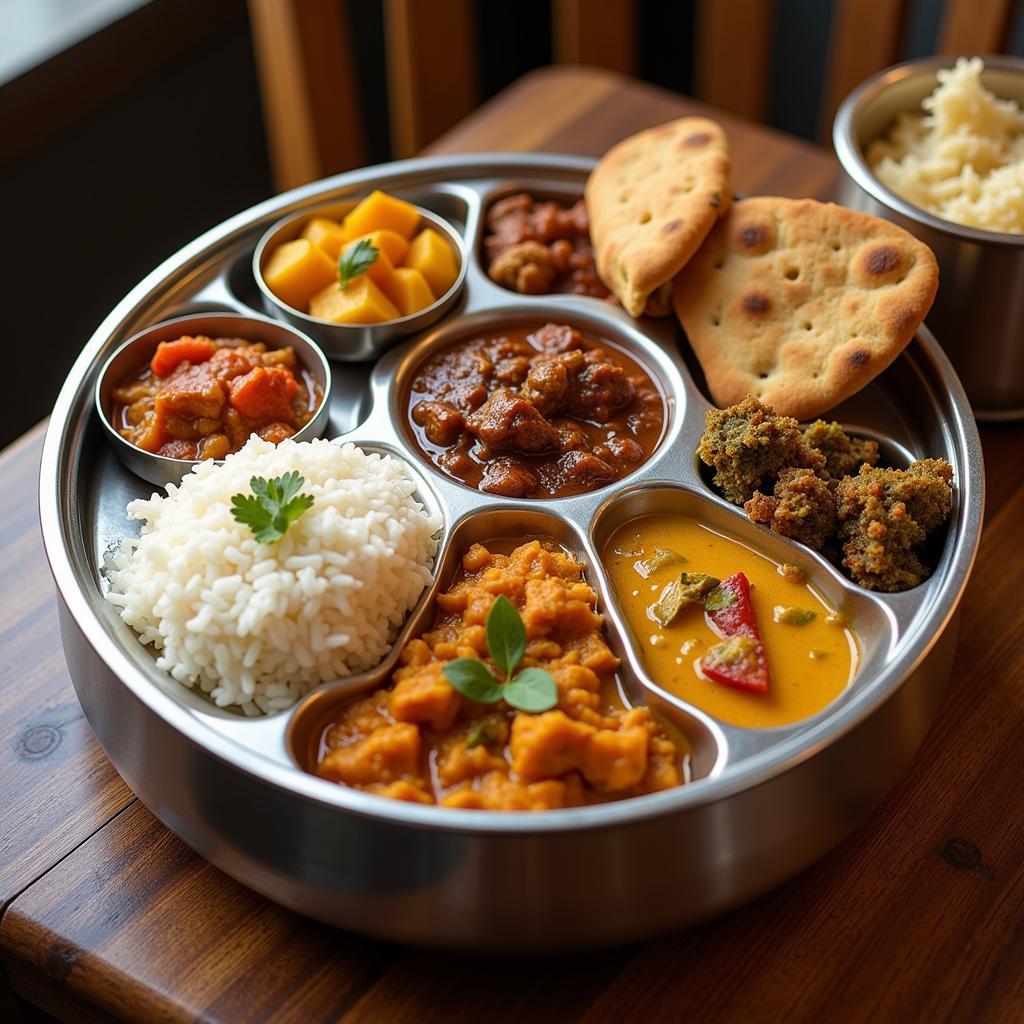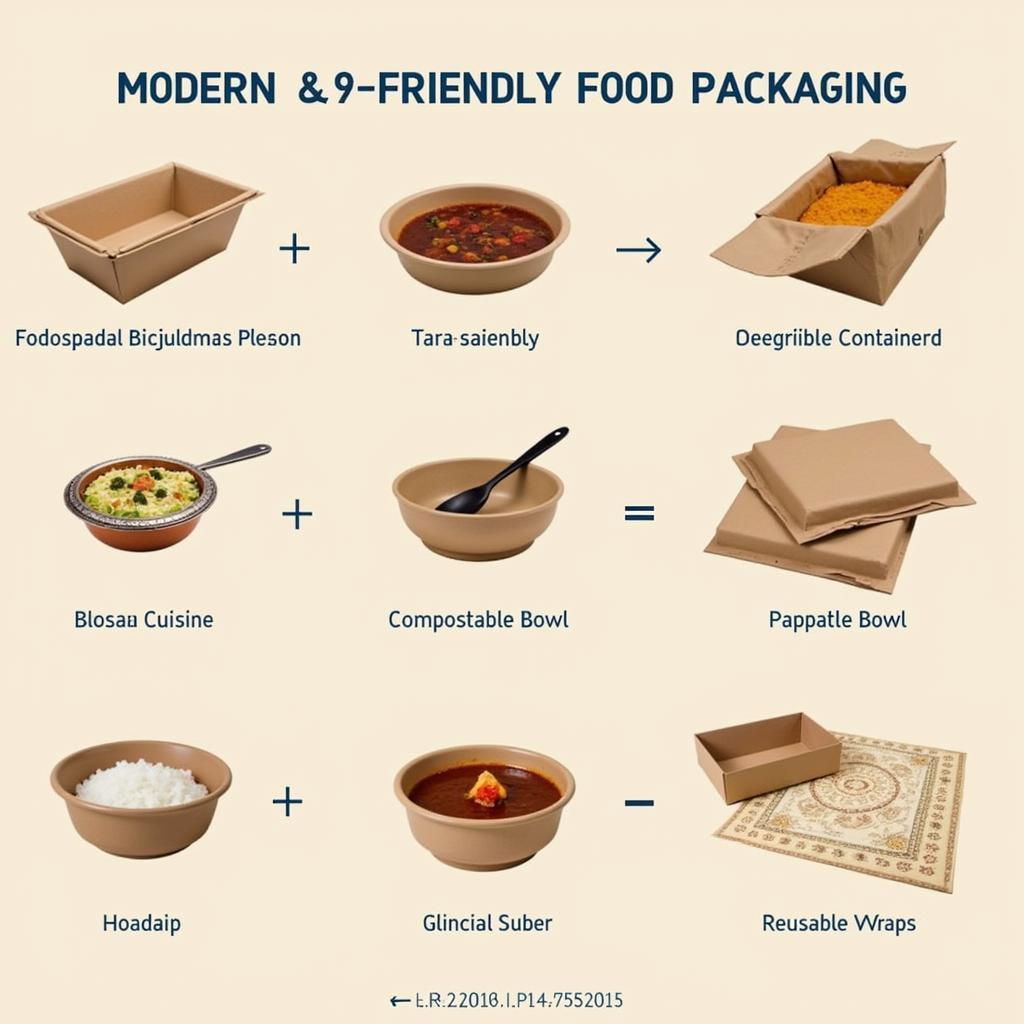When it comes to the vibrant and diverse world of Indian cuisine, taste is just the tip of the iceberg. The way Indian food is packaged plays a crucial role in preserving its freshness, aroma, and authenticity, taking your taste buds on a journey to the heart of India. From traditional tiffins to modern sustainable solutions, let’s delve into the fascinating realm of Indian Food Packaging.
The Essence of Indian Food Packaging: More Than Just Containers
 Traditional Indian Tiffin
Traditional Indian Tiffin
Indian food packaging is more than just about containment; it’s about preserving a legacy. Think of the iconic stainless steel tiffins, stacked containers that have been carrying home-cooked meals for generations. These humble carriers represent the heart of Indian hospitality, ensuring that food is transported with care and enjoyed at its best.
Beyond Tradition: Modern Innovations in Indian Food Packaging
 Modern Indian Food Packaging
Modern Indian Food Packaging
While tradition holds a special place, the Indian food packaging industry is evolving. Today, you’ll find a blend of traditional wisdom and modern innovation. Biodegradable containers made from sugarcane pulp or bamboo are gaining popularity, catering to the eco-conscious consumer. Vacuum-sealed packaging helps to lock in the flavors of spice blends and ready-to-eat meals, extending shelf life without compromising taste.
Navigating the World of Indian Food Packaging: What to Consider
Choosing the right packaging for Indian food can be a delightful yet important decision. Here’s what you need to keep in mind:
- Flavor and Aroma Preservation: Indian cuisine is known for its bold flavors and captivating aromas. Opt for packaging materials that don’t impart any unwanted tastes or odors to the food.
- Temperature Control: From piping hot curries to refreshing raitas, Indian food encompasses a wide range of temperatures. Choose packaging that can withstand varying temperatures without compromising the quality of the food.
- Portioning and Presentation: Consider the type of Indian food you’re packaging. Single-serving containers are great for takeaways, while larger, family-style packaging works well for gatherings.
Frequently Asked Questions about Indian Food Packaging
What are the traditional materials used in Indian food packaging?
Traditionally, materials like banana leaves, lotus leaves, and clay pots were used to package Indian food. These natural materials not only imparted a unique aroma to the food but also helped keep it fresh.
Is Indian food packaging environmentally friendly?
With the increasing awareness of environmental concerns, many Indian food businesses are switching to eco-friendly packaging options such as biodegradable containers and compostable cutlery.
How can I ensure the freshness of Indian food in packaging?
Proper sealing and temperature control are key to maintaining the freshness of Indian food. Vacuum sealing or using airtight containers can help lock in flavors and prevent spoilage.
What are some innovative Indian food packaging trends?
The use of edible films made from plant-based materials and smart packaging that monitors food freshness are some of the latest innovations in the Indian food packaging industry.
Exploring the Rich Tapestry of Indian Food Packaging
The world of Indian food packaging is a testament to the country’s rich culinary heritage and its ability to embrace innovation. As you savor the next delicious Indian meal, take a moment to appreciate the thought and care that goes into packaging, ensuring that every bite is a burst of authentic flavor.
For assistance with any of your Indian food needs, feel free to contact us at Phone Number: 02437655121, Email: [email protected], or visit our address: 3PGH+8R9, ĐT70A, thôn Trung, Bắc Từ Liêm, Hà Nội, Việt Nam. Our dedicated customer support team is available 24/7 to assist you.